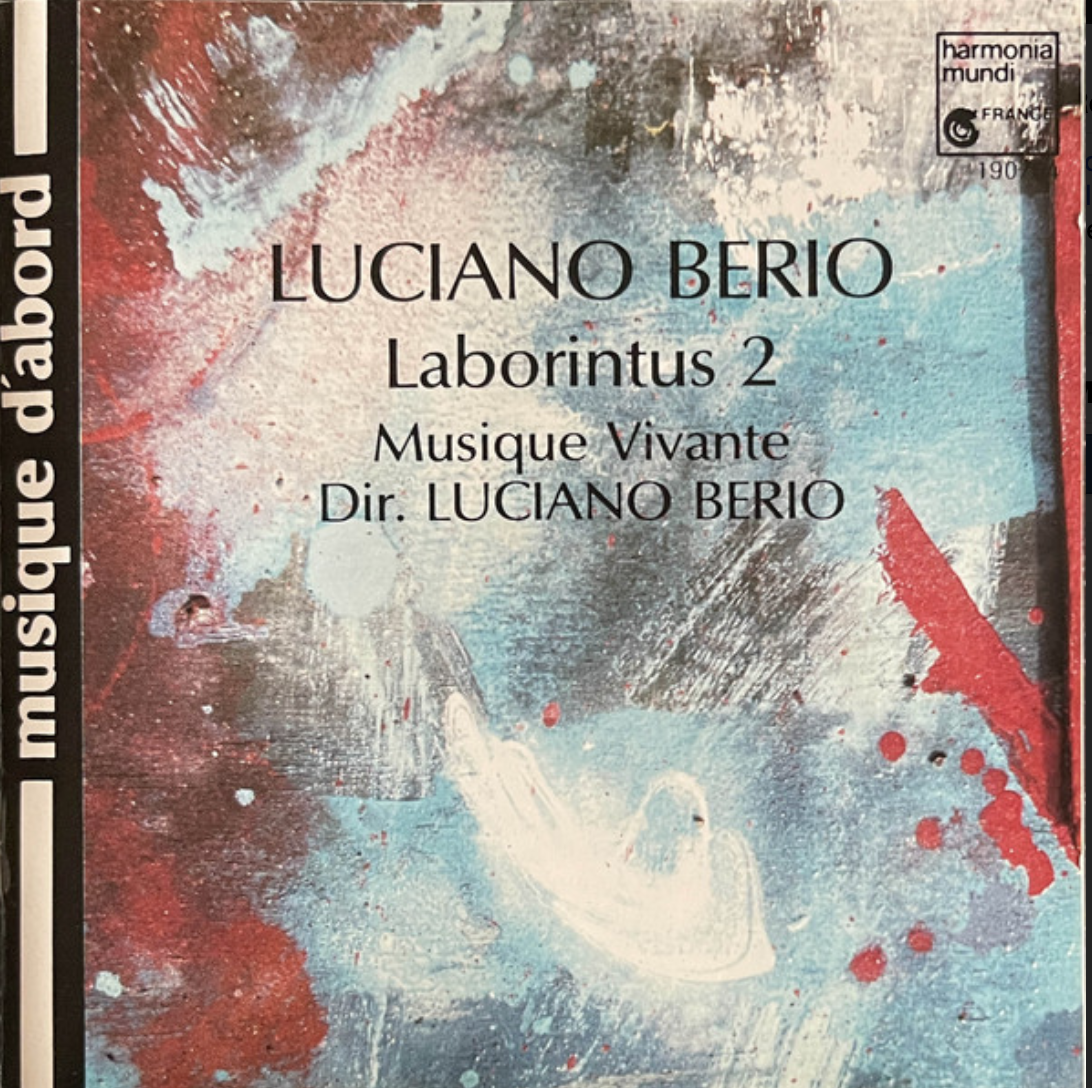“Laborintus II, composed in 1965, was commissioned by the French Television to celebrate the 700th anniversary of Dante’s birth. It takes its title from the poetic collection Laborintus by Edoardo Sanguineti.
The text of Laborintus II develops certain themes from Dante’s Vita nuova, Convivio, and Divina Commedia, combining them – mainly through formal and semantic analogies – with Biblical texts and texts by T. S. Eliot, Pound and Sanguineti himself.”
“The main formal reference of Laborintus II is the catalogue, in its medieval meaning (like the Etymologies of Isodore of Seville, for instance, also appearing in Laborintus), which combines the Dantesque themes of memory, death and usury – that is, the reduction of all things to market value. Individual words and sentences are sometimes to be regarded as autonomous entities, and sometimes to be perceived as part of the sound structure as a whole.”
“The principle of the catalogue is not limited to the text: it underlies the musical structure as well. Laborintus II is a catalogue of references, attitudes and elementary instrumental techniques; a rather didactic catalogue, like a school book dealing with Dantesque visions and musical gestures. The instrumental parts are developed mainly as an extension of the vocal actions of singers and speakers, and the short section of electronic music is conceived as an extension of the instrumental actions.”
“Laborintus II is a theatre work; it can be treated as a story, an allegory, a documentary, a dance. It can be performed in a school, in a theatre, on television, in the open air, or in any other place permitting the gathering of an audience.” –Luciano Berio
Read more about Laborintus II and Luciano Berio here.
Contributed by Gianluca Giuseffi Grippa





